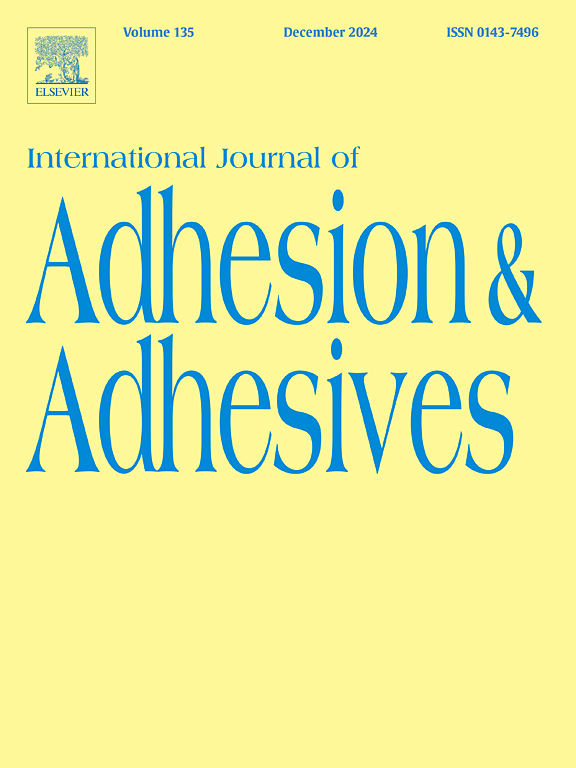利用葡萄糖水热碳化产生的水碳(含或不含丙烯酸/丙烯酰胺),简便、绿色地制备碳质材料基木材生物粘合剂
IF 3.2
3区 材料科学
Q2 ENGINEERING, CHEMICAL
International Journal of Adhesion and Adhesives
Pub Date : 2024-10-18
DOI:10.1016/j.ijadhadh.2024.103851
引用次数: 0
摘要
针对传统木材粘合剂甲醛释放量大、易霉变、易燃等问题,本文首次报道了利用葡萄糖水热碳化(HTC)产生的碳质材料(水炭)与或不与丙烯酸(AA)和丙烯酰胺(AM)制成的无甲醛胶合板生物粘合剂。生物粘合剂(BD-G/AA-180)的最高湿剪切强度为 1.32 MPa,符合中国国家标准 GB/T 9846-2015(≥0.7 MPa)。研究发现,葡萄糖与 AM 或 AA 共 HTC 产生的水炭表面存在大量官能团(-NH2 和 -COOH)。在热压处理过程中,通过脱水或酯化反应形成共价键(生物粘合剂成分之间;生物粘合剂与木材之间)是提高湿剪切强度的关键因素。与从多糖和蛋白质中提取的生物粘合剂不同,这些从水碳碳质材料中提取的生物粘合剂在聚磷酸铵的帮助下具有优异的防霉性能和阻燃性能。这项工作为制备绿色无甲醛胶合板生物粘合剂铺平了一条新路。本文章由计算机程序翻译,如有差异,请以英文原文为准。

Facile and green preparation of carbonaceous material-based wood bio-adhesives using hydrochar from hydrothermal carbonization of glucose with or without acrylic acid/acrylamide
To address the issues of formaldehyde emission, mildew, and easy combustion of traditional wood adhesives, this paper, for the first time, reported formaldehyde-free plywood bio-adhesives using carbonaceous material (hydrochar) generated from hydrothermal carbonization (HTC) of glucose with or without acrylic acid (AA) and acrylamide (AM). The highest wet shear strength of bio-adhesives (BD-G/AA-180) was 1.32 MPa, which meets the Chinese national standard GB/T 9846-2015 (≥0.7 MPa). It was found that functional groups (–NH2 and –COOH) were abundant on the surface of hydrochar from co-HTC of glucose with AM or AA. The formation of covalent bonds (between components of bio-adhesives; between bio-adhesives and wood) via dehydration or esterification reaction was a key factor in improving wet shear strength during hot-press treatment. Unlike bio-adhesives developed from polysaccharides and proteins, these hydrochar carbonaceous material-derived bio-adhesives had excellent anti-mildew properties and flame resistance with help from ammonium polyphosphate. This work paves a new road to prepare green formaldehyde-free plywood bio-adhesives.
求助全文
通过发布文献求助,成功后即可免费获取论文全文。
去求助
来源期刊

International Journal of Adhesion and Adhesives
工程技术-材料科学:综合
CiteScore
6.90
自引率
8.80%
发文量
200
审稿时长
8.3 months
期刊介绍:
The International Journal of Adhesion and Adhesives draws together the many aspects of the science and technology of adhesive materials, from fundamental research and development work to industrial applications. Subject areas covered include: interfacial interactions, surface chemistry, methods of testing, accumulation of test data on physical and mechanical properties, environmental effects, new adhesive materials, sealants, design of bonded joints, and manufacturing technology.
 求助内容:
求助内容: 应助结果提醒方式:
应助结果提醒方式:


